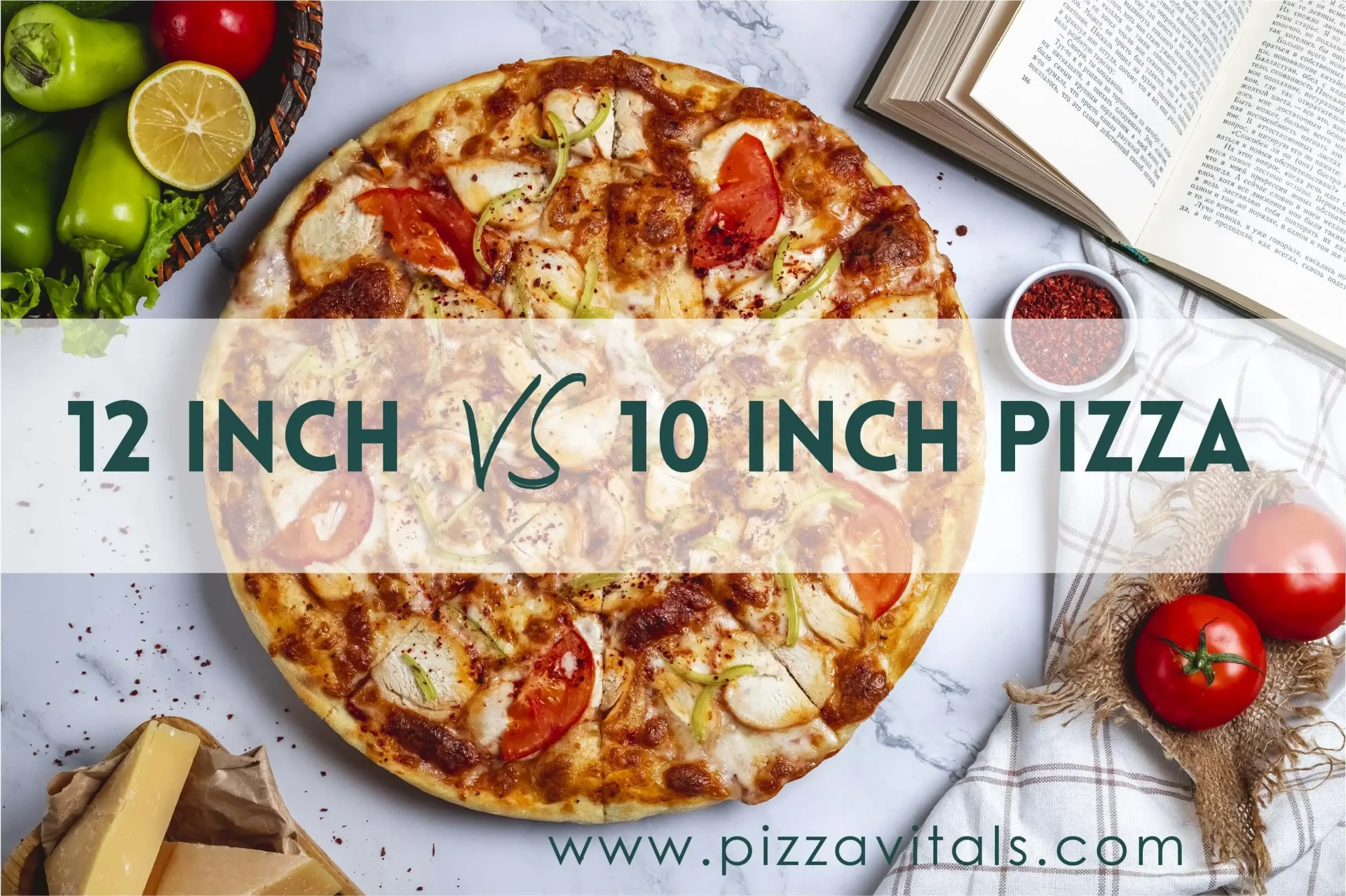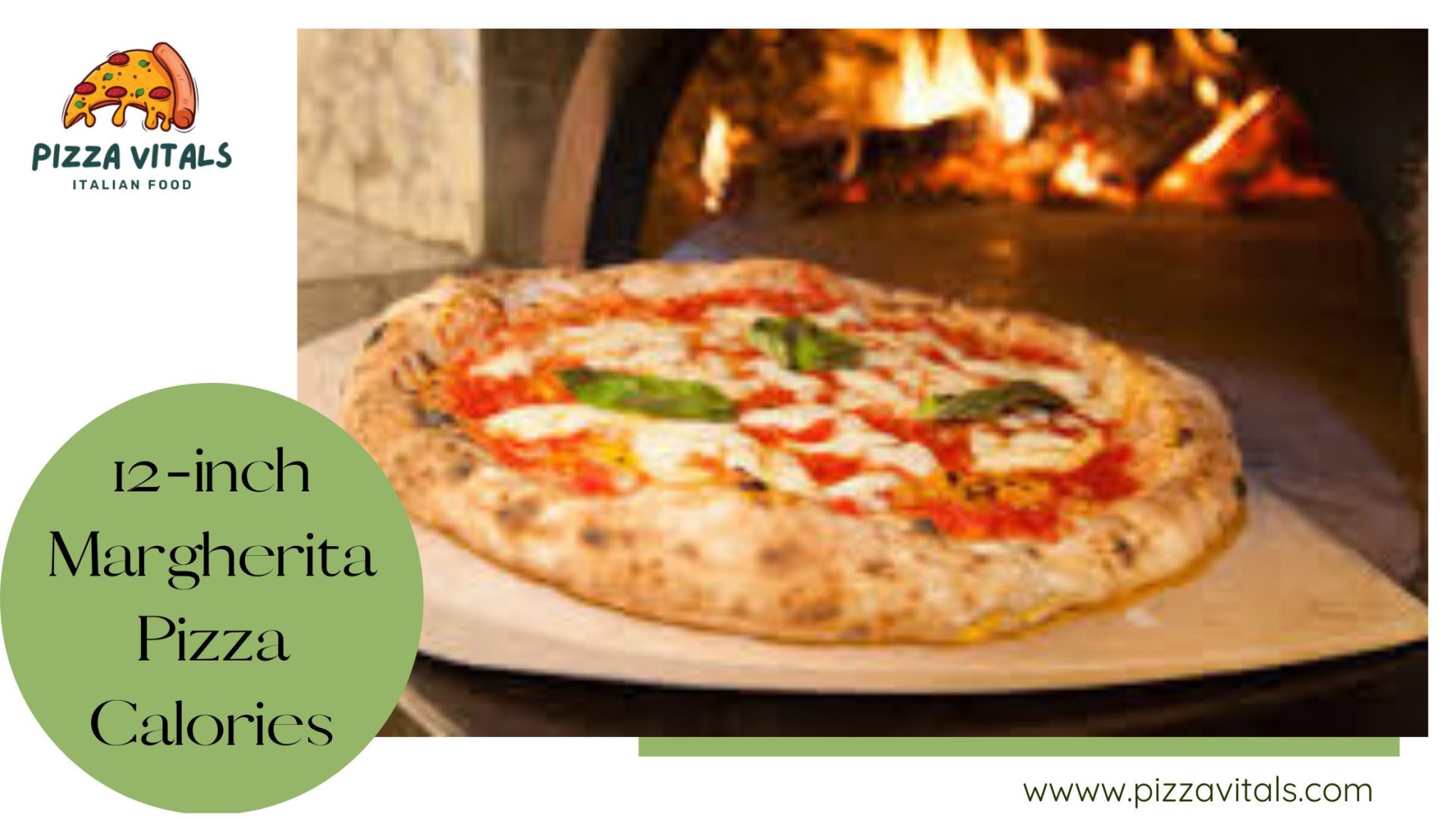Accurately Calculate Your 12 Inch pizza weight
Pizza lovers, have you ever wondered about the weight of your favorite 12-inch pizza? As much as we enjoy indulging in a slice or two, knowing the exact weight of what we’re consuming is always helpful. Fortunately, accurate calculations can provide us with that information. In this blog post, we’ll explore the methods for calculating the weight of a 12-inch pizza and why it’s important to know. So sit back, grab a slice, and let’s delve into the world of pizza weight calculations.
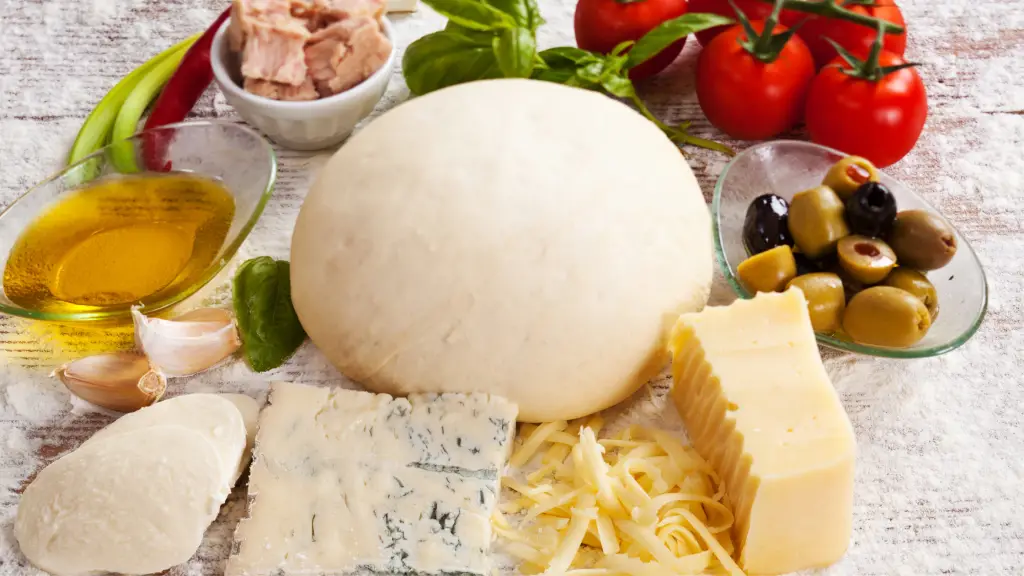
Overview of 12-inch pizza weight
The 12-inch pizza weight can vary depending on several factors, including the type and amount of ingredients used and how it is prepared and cooked. Knowing the exact weight of your pizza allows you to have better control over portion sizes, resulting in improved recipe accuracy and cost savings in food costs over time. It also helps you understand how much food you are consuming and how many calories you take in with each meal or snack, which can be beneficial for people trying to watch their calorie intake or lose weight in general.
Why It Is Important To Know The 12-Inch Pizza Weight
Knowing the 12-inch pizza is important for a few reasons. For one, it can help with portion control. If you are trying to maintain a certain diet, clearly understanding how much food you consume can be beneficial. Additionally, for those who enjoy cooking and baking, accurately measuring a pizza’s weight can help improve recipe accuracy. Furthermore, for pizzerias and pizza shops, accurate measurements of pizza weight can help with inventory management and pricing. Knowing the weight can also help determine the cost of a pizza and how many slices can be made from it.
What is the Weight of a 12 Inch of Pizza?
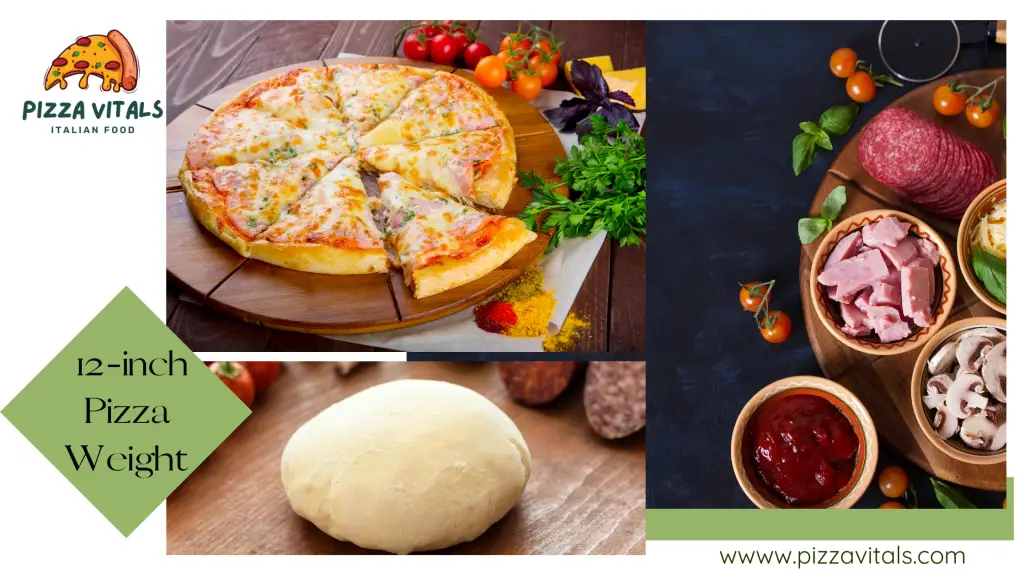
A typical 12-inch pizza can weigh between 18-24 ounces or 1.125-1.5lb. This will vary depending on the crust type, ingredients, and cooking method. However, it is important to note that these are general averages and the 12-inch pizza weight can vary greatly depending on the specific circumstances.
Factors that Affect Pizza Weight
When it comes to pizza, size does matter. But what about the weight of a pizza? Does the size of a pizza also affect its weight? In this section, we will explore the factors that can affect the weight of a 12-inch pizza. Get ready to find out the science behind pizza weight!
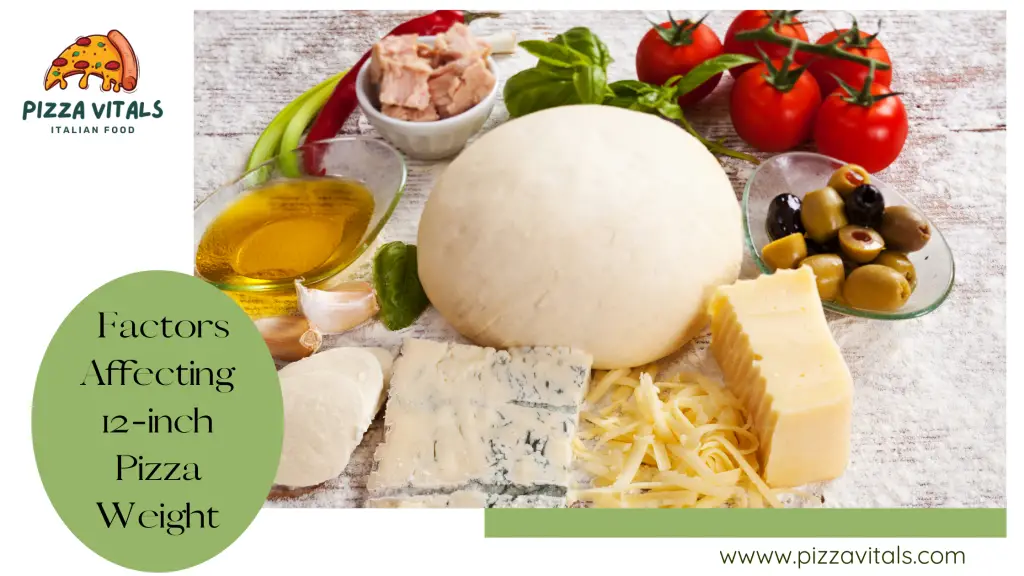
A. Type of crust (thin, thick, stuffed)
The type of crust is one of the biggest factors that affect pizza weight. Pizza dough weight varies as per crust. A thin-crust pizza will typically weigh less than a thick-crust or stuffed-crust pizza. This is because a thin crust has less dough, which is the heaviest component of a pizza.

B. Ingredients used (amount and density of toppings)
The ingredients used on a pizza can also impact its weight. A pizza with many toppings or dense ingredients like meats and cheeses will weigh more than a pizza with few or lighter toppings.
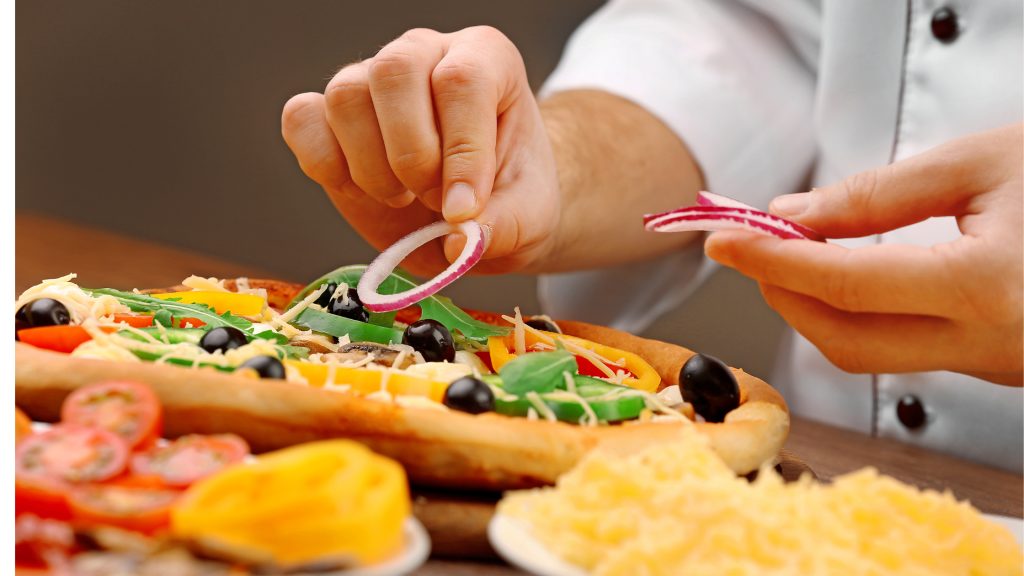
C. Cooking method (baked, grilled, deep-fried)
The cooking method can also affect the weight of a pizza. A deep-fried pizza, for example, will weigh more than a pizza that is baked or grilled because the dough will absorb oil during the frying process.
D. Dough Preparation
The dough preparation method can also affect the weight of the pizza. For example, if the dough is over-proofed, it can expand too much during baking, resulting in a lighter-weight pizza.
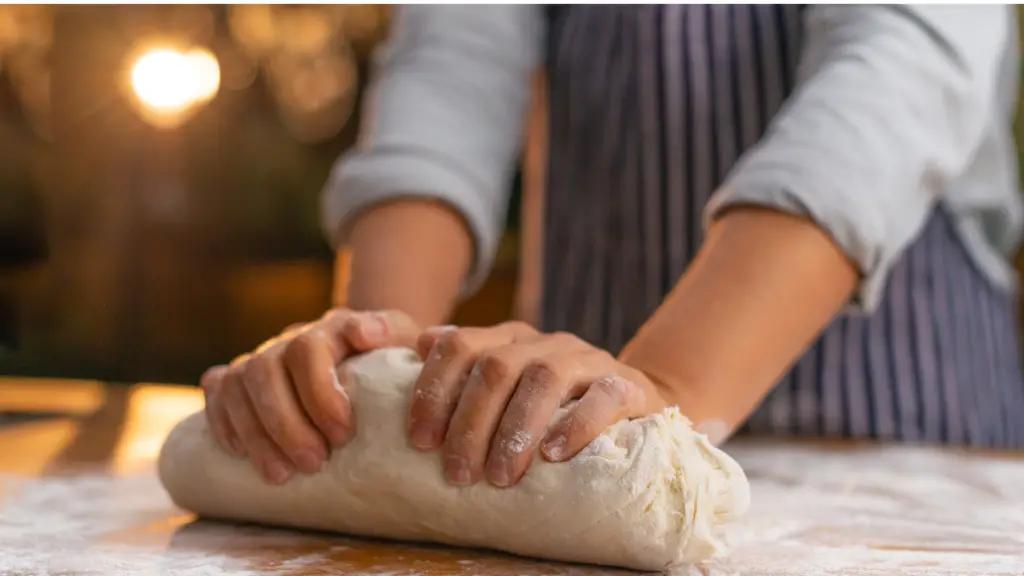
E. Topping’s density and amount
The density and amount of toppings can also affect the weight of a pizza. A pizza with a lot of toppings or dense ingredients like meats and cheeses will weigh more than a pizza with few or lighter toppings.
F. Type of oven used to cook the pizza
The type of oven used to cook a pizza can also affect its weight. Different types of ovens, such as wood-fired, gas, or electric, can all have different impacts on the final weight of a pizza.
Wood-fired ovens: These are typically used in traditional pizzerias and can reach very high temperatures. They create a unique smoky flavor and can also create a crispier crust. However, the high heat may cause the pizza to cook quickly, resulting in a lighter-weight pizza.
Gas ovens: This oven uses gas as a fuel source and can reach high temperatures. They can also create a crispy crust, but the heat may not be as intense as in a wood-fired oven, resulting in a slightly heavier pizza.
Electric ovens: Electric ovens use electricity as a fuel source and can have a more consistent temperature than gas or wood-fired ovens. They can also create a crispy crust, but the temperature may not be as high as the other types of ovens, resulting in a slightly heavier pizza.
Conventional ovens: These are typically found in home kitchens and are less intense in terms of heat than wood-fired or gas ovens. They cook the pizza more evenly and slower than other types of ovens, which can result in a slightly heavier pizza.
How to Measure 12-Inch Pizza Weight?
A. Using Kitchen Scales
One of the most accurate ways to measure the weight of a pizza is to use kitchen scales. Kitchen scales are specifically designed to measure weight and can be calibrated to give an accurate reading. Simply place the pizza on the scale and take note of the weight.
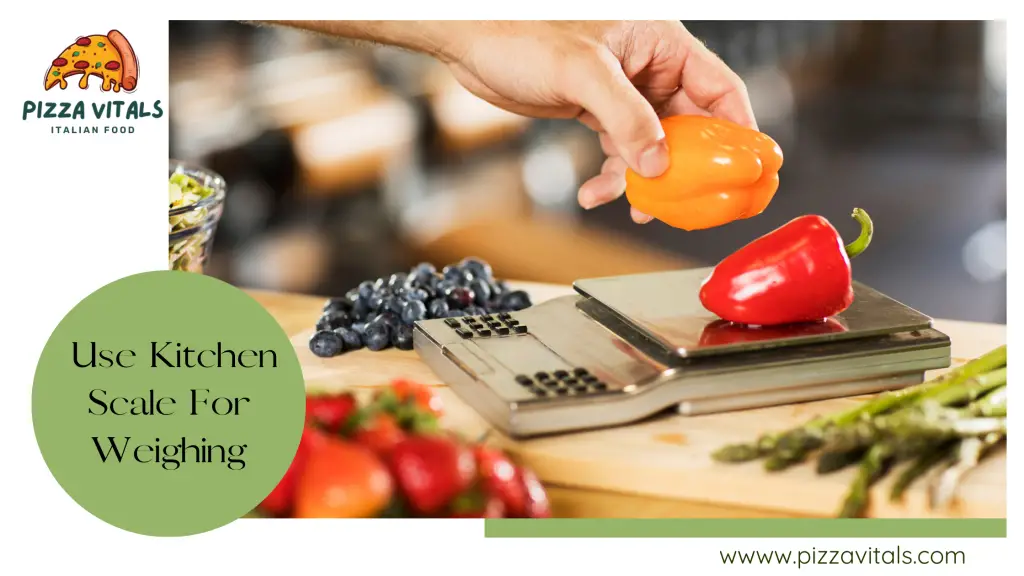
B. Using Measuring Cups and Spoons
Another way to measure the weight of a pizza is to use measuring cups and spoons. This method is not as accurate as using kitchen scales, but it can still provide a rough estimate of the weight. Measure the amount of dough, cheese, and other ingredients used in the pizza and use a conversion chart to estimate the weight.
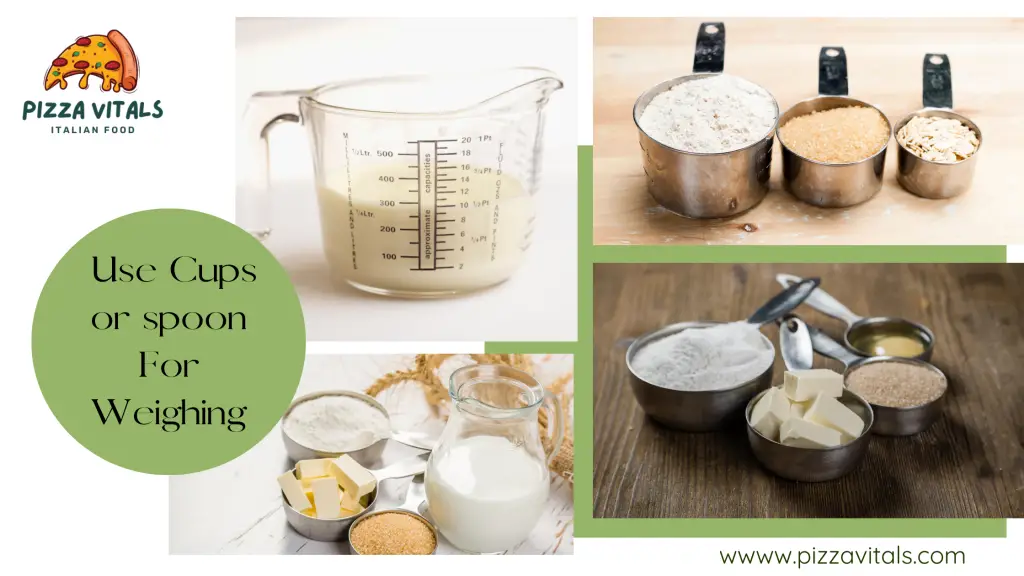
C. Other Tools For Measuring Pizza weight
Other tools can be used to measure the weight of a pizza, such as a food scale or a digital kitchen scale. These tools can be useful for those who don’t have traditional kitchen scales or for measuring the weight of small pieces of pizza.
D. Calculations for different types of pizzas
Different types of pizzas have different weight and density calculations. For example, deep dish pizza is typically denser and heavier than a thin crust pizza because of the number of ingredients used in the crust and toppings. A thin-crust pizza will typically have less dough and fewer toppings, making it lighter in weight.
Tips for Measuring 12-inch Pizza Weight Accurately
Benefits of Knowing Your 12-Inch Pizza Weight
Common Pitfalls when Measuring 12-Inch Pizza Weight
Frequently Asked Question
Final Verdict
The exact weight of a 12-inch pizza can vary based on several aspects, including the kind of crust, ingredients utilized, and cooking methods. Understanding the weight of a 12-inch pizza can be beneficial for portion control and recipe accuracy. To weigh a 12-inch pizza precisely, it is important to utilize kitchen scales, measuring cups, and spoons and consider any extra ingredients or toppings added during or after cooking.
Other things, such as air humidity, must be considered, as it can also affect the pizza’s weight. By applying the required tools and knowledge, accurately calculating the weight of a 12-inch pizza is achievable.





